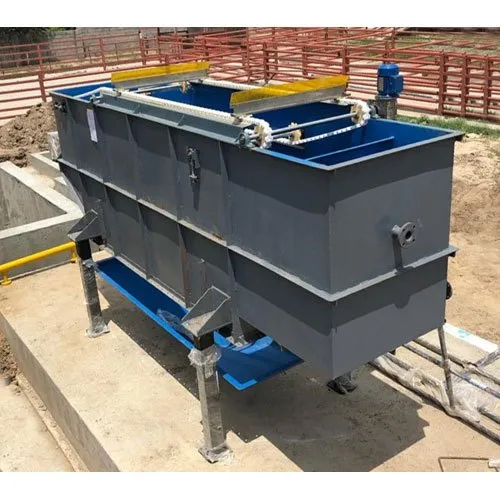
Dissolved Air Floatation
Dissolved Air Flotation (DAF) is a clarification process for the separation of solids, grease and oils. It works by producing a stream of micro-fine air bubbles that attach to solids and float them to the surface where they can be removed by a surface scraping mechanism.
DAF is ideally suited to particles and flocs that are slow settling, neutral density or buoyant. This is particularly relevant to food and other industries where solids are light and voluminous and so not suited to settling. DAF also takes up considerably less space than settling methods, generally less than 25% equivalent surface area needed.
Dissolved air flotation is very widely used in treating the industrial wastewater effluents from oil refineries, petrochemical and chemical plants, natural gas processing plants, paper mills, general water treatment and similar industrial facilities. A very similar process known as induced gas flotation is also used for wastewater treatment. Froth flotation is commonly used in the processing of mineral ores.
Mechanism of Dissolved Air Flotation:
Solid particles in liquid suspension become attached to microscopic air bubbles. Waste flow or a portion of clarified effluent is pressurized to 3.4 – 4.8 bar in the presence of sufficient air to approach saturation. When pressurized air-liquid mixture is released to atmospheric pressure, minute air bubbles are released from the solution.Agglomerate rise to the surface to join other particles and form a blanket that can be removed mechanically. Flotation is used primarily to remove light suspended solids.
Sludge flocs, suspended solids, oil globules are floated by the air bubbles which:
- Attach to floc particles
- Become enmeshed in floc particles.
Further air-solid mixture is skimmed off from the surface. Clarified liquid is removed from the bottom. A portion of the effluent is recycled back to the pressure chamber.
Benefits
- Simple in operation
- Less startup time
- Easily relocated
- One man inspection is sufficient
- Very compact, occupies very less space
- Less maintenance, low capital & operation cost
Features
- All stainless steel tank construction
- Quality drive and pump components for long-term reliability
- Complete, skid-mounted design for easy installation
- Rectangular profile for maximum space utilization
- Rugged tank design that will not flex

